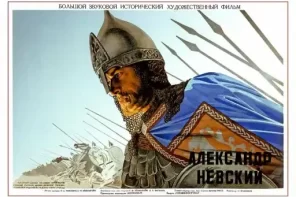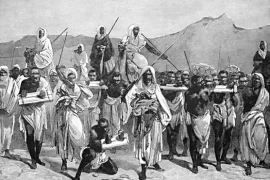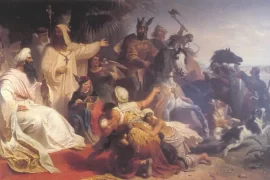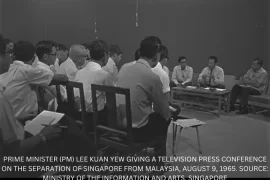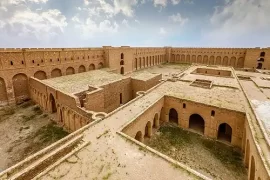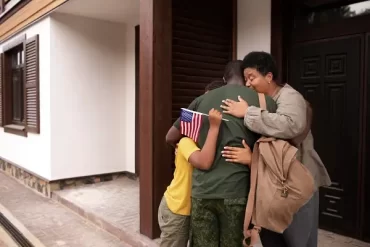The concept of diplomacy is as old as civilization. And the appointment of envoys is as ancient as politics itself, but not until the fifteenth century when the appointment of envoys began to be more or less on regular basis. Primarily, envoys had traditionally been recruited in Europe from wealthy aristocrat families in those old days. Social position in society was the prime factor for selection for a diplomatic assignment. At one stage, inordinate emphasis on linguistic competence was played on the selection of envoys, side by side a degree of financial solvency. Let’s look at Bangladesh’s position in diplomatic history
In Europe, the Italian states first established permanent legations in the fifteenth century which was followed by the introduction of the Ambassadorial system. Two classes of diplomatic representatives were working in Europe. One was Ambassador, who was obliged to vie for precedence in the capital where he was accredited to and the other semi-official agent, who did not have access to authoritative sources of information.
Since ancient times a diplomat has been in communication and negotiation with foreign governments though the nature of negotiations has grown very complex in the present day world.
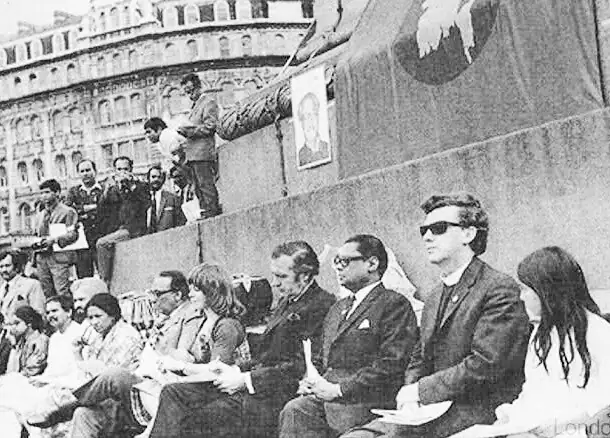
The origin of diplomacy in Bangladesh in fact dates back to the fourth century BC when sailor Buddha Gupta sailed from Chittagong port for Malacca. According to Malayan history, Buddha Gupta was instrumental in establishing relations between Bengal and Malacca in fourth century BC. Traditionally, the people of Bengal now Bangladesh is hospitable and as tactful as a diplomat. The people have inherent discipline in the art of diplomacy.
Fa Xien, Ibn Battuta and Ralph Fitch had established a link between Bengal and the countries these roving Ambassadors represented.Fa-Xien, Chinese great monk traveler, undertook visits to India, including Sonargaon of Bengal from 45- 411 AD. Abu Abdullah Muhammad Ibn Battuta, a Moroccan Muslim scholar and traveler had been to India from 1304-1369 AD. During his eight year stay in India Ibn Batutta visited Sylhet and Sonargaon of Bengal while Ralph Fitch, British explorer, travelled to Sonargaon in 1596. Dipankar Srijnan, who was born in 982 AD at Vajrayogini under Vikrampur of Dhaka, was pioneer in promoting relations between Bengal and Tibet through preaching the philosophy of Buddhism in the eleventh century AD. Having achieved clear perception and understanding in Buddhism from long studies in Sri Lanka, Dipankar Srijnan, was invited by the King of Tibet twice. Initially, he declined the invitation. Ultimately, Dipankar went to Tibet via Nepal on foot in 1041 AD at the invitation of Raja Byan Chub.
A great thinker and pundit, Dipankar Srijnan imparted knowledge to pupils in medicine and assisted Tibetan people in building water conservancy project. A dike which was built in Tibet under his supervision to protect people from the scourge of recurring floods remains till today as a symbol of friendship between people of Tibet and Bangladesh.Dipankar Srijnan had to play diplomacy as a mediator in resolving a dispute between Raja Nayapala and Kalacuri King Karna of western India while he was on way to Tibet. The dispute was reported to have arisen possibly because of continued expansionist design of Kalacuri King Karna.Dipankar was successful in diplomacy to bring two rival Kings to resolve their dispute amicably. On the basis of Dipankar’s philosophy his disciples formed Bka’gdams-pa sect in Tibet which was developed into famous Dgelugapa sect (Yellow hat) and became dominant in Buddhist religion in China, Mongolia and Siberian region of the erstwhile Soviet Union.
He was also received by the King of Nepal. Dipankar Srijnan was awarded the highest honor Atisa by King of Tibet. Another scholar and diplomat Sarat Chandra Das, who was born In Chittagong in 1849, visited Tibet several times as an envoy of the British and collected many information on Dipankar Srijan and published a book: Indian Pundit in the land of snow in 1893.Dipankar Srijnan was known in India, Nepal, Tibet and Sri Lanka as an outstanding scholar on Buddhism and died in Tibet at 72.Mural of Atish Dipankar is preserved at Ralung monastery in Tibet. His ashes were brought to Dhaka in 1978 at the instance of President Ziaur Rahman to pay respect to this great diplomat of the eleventh century. His ashes are preserved at Atisa hall in Kamalapur Buddhist monastery.
According to a number of Chinese records as deciphered by Hurth and Rock hill in Roung Pao in 1914 (Page 436-444) and P.C Bagehi and Hsiang Ling Wu,(page 96-134 in Visva-Bharatti annals), a number of emissaries had been exchanged between Bengal and China in the first half of fifteenth century. During fifteenth century Bengal was ruled by Pathan rulers independent of the government of Delhi and its capital was located at Pandua in the district of Maldah. According to information compiled in 1520 in Si Yang Ch’ao Kung Tien, first envoy was sent to China by King Giayasuddin of Bengal in 1408 AD whose capital was located at Sonargaon. I visited old Sonargaon several times where graveyard of King Ghiayasuddin located. President Ershad built a mosque in front of graveyard of Sultan Giayasuddin. Many old mosques still reflects old tradition of Muslim Bengal. The envoy reached T’aits’ang in king Su, with gifts from the King Giasuddin for the Emperor of China in 1409 AD. The envoy was received by the Minister of Foreign affairs at Tai-ts’ang. Relics of civilization of Bengal should be properly reserved by the government which could be made tourist center of attraction.
As per other records, envoys paid visit to China in 1414 and 1438 AD. However, there remains difference of opinion among the researchers on the exact date of bon voyage of first emissary from Bengal. The visits of envoys from Bengal inspired Emperor Yong Lo of China to initiate a policy for establishing political relations with foreign countries in 1409.emperor Yong Lo was the third emperor of the Ming dynasty of China. Under his supervision production in China had increased in every fields and capital had shifted from Nanking to Peking (Beijing). According to Chinese compilation Ming She, many more envoys from Bengal visited China since 1409 AD. In 1412, officials were sent out to Cheng-Kiang by the Emperor to receive the Ambassador from Bengal. The Ambassador was on a visit to convey the message of the death of the King of Bengal Ghiyasuddin. The name of the Ambassador did not appear in the report. While granting an audience to the Ambassador Chinese Emperor expressed shock and sympathy at the sudden demise of Sultan Ghiyasuddin, King of Bengal. Emissaries were sent to Bengal by the emperor of China to attend the coronation ceremony of the Prince Saifuddin Hamza Shah, who ascended to the throne of his father Ghiyasuddin. The coronation took place in 1412 AD.
The newly appointed King had sent a delegation to Emperor Yong Lo with gifts in an attempt to reciprocate the sentiments of the Chinese Emperor and to continue bilateral political relations that developed by his father. The Chinese Emperor similarly acknowledged the desire of the King of Bengal and advised envoys Eunuch Hou-hien to undertake visit King of Bengal with presents for the King, Queen, and Ministers of the cabinet. On way to Pandua Eunuch Hou-hien arrived at the port of Cha-ti-Kiang. In fact, it was Chittagong port in present day .From Cha-ti-Kiang envoy went to Suo-na-ent Kiang (Sonargaon) by boat.Sonargaon was humming with commercial activities during the period of Sultan Ghiyasuddin. It was known as emporium of trade center where goods were collected and distributed. Chinese envoy Eunuch travelled to Pandua by road from Sonargaon. Sonargaon was located at the confluence of three mighty rivers of the Meghna, the Brahmaputra and the Lakya in old days.Lakya was possibly Sitalakhya river of Narayanganj.
It is interesting to note that Ibn Batuta also paid a visit to Sylhet and Sonargaon on his way to China as an envoy of the Emperor of Delhi Muhammed bin Tughlag khan. Ibn Batuta was appointed as Kadi (Judge) in the court of Delhi emperor where he served eight years. On his journey Ibn Batuta met the great saint who introduced Sufism in Bengal —-Sheikh Jalaloddin of Tebriz, who is popularly known as Hazrat Shah Jalal, but Ibn Batuta did not meet with King of Bengal Fakhroddin who had presided over Bengal from Sonargaon because Fakhroddin was opposed to the emperor of Delhi. From Sonargaon Ibn Batuta boarded a junk which sailed for Java Sumatra. (The travels of Ibn Batuta by the Rev.Samuel Lee, published in London in 1829 at page 195—198).According to historian Dr. Abdul Karim, Sultan Jalal-al-din Muhammad Shah, son of Raja Ganesha of Bengal had dispatched an envoy with gifts for the ruler of Egypt, AL-Ashraf Bara bay to seek blessing of the Khalifah.Sultan Jalal-al-din Muhammad Shah was finally presented with the robe of honor from Al-Ashraf Baras bay, the ruler of Egypt (Social history of Muslims in Bengal by Dr.Abdul Karim). Therefore, it is evident that ruler of Bengal had established relations with far off countries. It may be recalled that rulers of Bengal were, by and large, kind hearted, generous and had religious bend of mind. As a result, Ghiyash Al-Din Azam and Jalal-al-Din Muhammad Shah had built madrasas in Mecca and Madina. In those old days people of Mecca and Madina were very poor. I recalled that my great grandfather Munshi Meherullah , not Munshi Mohammad Meherullah of Jessore,had also contributed towards madrasa education in Mecca while he was on way to perform Hajj in the middle of nineteenth century. The nineteenth century saw fall of Chinese empire, Mughal empire, the Spanish and second French as well.
In fact, ties between Bengal and China go far back into history which began as early as before Christian era. Monk Xuan Zang of Tang dynasty from China visited in 627 AD at the age of 25 the ancient Kingdoms of Samata, Purnavardhana , near Bogra-Rangpur and Karnasuvarna which was located in around Dacca in old times. According to the Ming annals emperor ordered Cheng-Ho, a Muslim ,who was a court eunuch to sail out in 1405 AD on an expedition to the west at the head of 28,000 sailors on board. Being a Muslim of Mongol-Arab origin Cheng –Ho was provided with huge quantities of gold and silk to offer as gift to the ruler or King of the country he visited.Cheng –Ho in fact led seven major expeditions. The main purpose of his expedition was in search of emperor’s young nephew as per annals, but it appears to be diplomatic offensive to establish political and business link with the rulers of the western kingdoms. In return, emperor of China received tribute and gifts which included luxury goods and rare and marvelous creatures like Lions, tigers, Zebras from Egypt and Giraffe from the ruler of Bengal which he might have received from Africa (Hilda Hook ham: a short history of China published from London in 1969 Page 156). The Sultan of Bengal Hamza Shah, son of Sultan Ghiyasuddin presented Giraffe twice, apart from horse, rhinoceros, horns, king fisher’s feathers frankincense, ebony pepper etc. the Giraffe was known as Ki-Lin kind of suspicious spirit in Chinese legend. It was an animal not known in China, but it evoked curiosity among the Chinese. Chinese artist Shen du of Ming dynasty painted a picture of Bengal Giraffe and this painting has been preserved till today. This story was narrated to this writer in 1985 by a few Chinese journalists during their investigating report on the visit of Cheng-Ho, first Chinese navigator, to Bengal to publish a magazine by China Pictorial to observe 500 years of journey by Cheng-Ho. The painting is preserved in Nanking museum which demonstrates the level of relationship maintained by the rulers of China and Bengal in fifteenth century. Chinese journalist delegation visited Chittagong and Sonargaon in 1985. My article on the visit of Cheng-Ho was carried by defunct Bangladesh Observer in November 26-27, 1992 while on Historical Sonargaon on February 5, 1993. Possibly Cheng-Ho was selected to lead these expeditions as most of the countries he visited were under the domination of Muslim rulers.Cheng-Ho visited Indonesia,Malaya,India,Africa and the Persian Gulf countries. Cheng –Ho carried out his diplomatic offensive successfully and brought local King of Ceylon and ruling Prince of Palembang to pay homage in person before Emperor Yong Lo, who presided over the Dragon throne. According to one record, Cheng-Ho was accompanied by two Ambassadors and four Vice-Ambassadors. A banquet was given by the King of Bengal in honor of Chinese envoys. According to Chinese record, no beef or mutton was served at the banquet nor could Ambassadors drink for fear of trouble as it was breach of decorum in Bengal. Although Muslim was presiding over the destiny of Bengal, the court was predominantly influenced by Hindus.
It is on record that the ruler of Bengal had sought good offices of the emperor of China in 1420 AD through his emissary when repeated attacks were carried out by Sultan Ibrahim Shah Sharqi of Janupur on Bengal. In response to the request of the ruler of Bengal envoy Hou-hien was sent by the Chinese emperor to inform the Sultan of Jaunpur that by being good neighbor he could save his own. Presents of silk and money were given to the Sultan of Janupur in anticipation of good neighborliness. It was indeed a good gesture shown by the Chinese emperor towards the ruler of Bengal which clearly indicated the successful diplomacy conducted by the ruler of Bengal. Ambassadors from Bengal were sent to China between 1405 and 1409 AD. The visits of Ambassador to China were made an annual feature by the ruler of Bengal until 1415 AD when Raja Ganesa died. Ambassadors were reportedly sent twice in 1420 after the death of Raja Ganesa and another time in 1438-1439. With the dwindling of Ganesa dynasty in 1442 no attempt was made to resume relations with China.
Chinese emperor and Ambassadors were presented with gold basins, gold girdles, gold flagons, g old bowls, golden bells and long gowns of white hemp and silk by the Sultan of Bengal. From the nature of gifts given by the Sultan of Bengal or King of Bengal one can say certainly that Bengal was rich in resources. It was a civilized nation. Chinese trade with Bengal consisted of gold, silver, and satins, silk, blue and white porcelain, copper, iron, vermillion and quick silver and grass mats. I saw some Chinese blue and white porcelain preserved in mini Museum of Lal bagh fort of Dacca. It was built by Prince Azam, Son of Emperor Aurangzeb in 1678. In the fifteenth century, according to Chinese accounts, Bengal used to produce white paper which was smooth and glossy, cotton fabrics, silk and embroidered silk handkerchiefs. After the fall of Ming dynasty political and trade relation between Bengal and china had ceased.
From the fifteenth century till the arrival of the British Raj there had not been much activities of worth mention in diplomatic arena in Bengal. During the period of subjugation under the British Bengalis had no place in the field of diplomacy. Following the partition of British India, professionalism of diplomacy had taken shape. Competitive examination requiring high educational standard had been introduced.Evey year selection had been made for entry into diplomatic service through competitive written examination plus Viva voce. However, there was wide disparity in recruiting from East Pakistan which became part of Pakistan during partition of British India in 1947. A few had been inducted diplomatic service from East Pakistan at the initial stage which became an independent and sovereign country through bloody war of liberation in December, 1971. Some of them were rated as diplomats par excellence. The name of Khajwa Mohammad Kaiser may be mentioned in this regard who served as Pakistan Ambassador to China. Ambassador Abul Fateh was in Iraq as Pakistan Ambassador. Ambassador K.K.Panni from Manila and Ambassador Abdul Momen from Argentina defected as well. To my knowledge, Salimuzzaman, Deputy High Commissioner in London and Manzur Ahmed Chowdhury, Counsellor in Pakistan mission in Paris did not resign. During the war of liberation, many Bengali diplomats of Pakistan Foreign service, who were posted in missions abroad, declared their allegiance for Bangladesh. The first in the series of defection was K.M.Shehabuddin, Second Secretary and Amjadul Haq, Assistant Press Attaché in New Delhi followed by A.H.Mahmood Ali in New York who recently served as Foreign Minister of Sheikh Hasina’s so-called poll time cabinet. The entire Bengali officers and officials numbering 70 working at Deputy High commission of Pakistan in Calcutta, India including Hossain Ali, Deputy High Commissioner, declared their allegiance in April, 1971 for Bangladesh. This was an all-time record in the history of diplomacy when diplomats and officials defected en masse to an emerging country. Second secretary Mohiuddin Ahmed from London defected on April 10. The news of defection of Pakistan embassy in Washington, DC on August 04, 1971 received worldwide attention. The defection of diplomats in Washington DC gave big jolt to Pakistan administration.
Among the high ranking diplomats, who declared their allegiance for Bangladesh, names of Abdul Fateh,Abdul Momin and K.K Panni are worth mentioning. All of them were holding Ambassadorial rank.
Technically, the first Bangladesh mission was set up in Calcutta on 18 April, 1971 when Bengali diplomats stopped normal functioning at Pakistan Deputy High Commission and converted it into Bangladesh mission. It was followed by an Information center which was set up in New Delhi on 26 April with K.M.Shehabuddin as its chief. On December 06, 1971 Bangladesh government in exile decided to open trade mission like trade representation of USSR, Romania, and Czechoslovakia etc. to establish commercial relations with different countries until Bangladesh is recognized by the international Community. The Government of India gave green signal to operate Bangladesh Trade mission from Calcutta. That was indeed success story of diplomacy in pre-liberation days.
The role played by Justice Abu Sayeed Choudhury, after quitting the position of Head of Pakistan delegation to the United Nations Human Rights commission in Geneva, was very effective indeed. Justice Abu Sayeed along with Bengali diplomats in different parts of the world played a significant role in mobilizing public opinion against genocide and in favor of recognition of Bangladesh. The role of first Foreign Secretary Mahbubul Alam Chashi, who resigned in protest from Pakistan Foreign service during the regime of General Ayub Khan, has many caps to his credit in dealing with foreign policy during crucial days of Bangladesh. It would not be fair to ignore the role of Iqbal Ather, a Pakistani diplomat, who resigned in protest from Ambassadorial rank from Italy against repressive measures in erstwhile East Pakistan. Iqbal Ather joined the diplomatic corps of the newly independent Bangladesh and contributed towards improving the image of Bangladesh along with Ambassador Ataur Rahman in Arab and African countries.
The fortitude, sagacity and sacrifice shown by Bangladeshi diplomats during the period of national crisis, will be remembered by the nation in the years to come. In the history of diplomacy their role will remain an epoch making episode.
Mohammad Amjad Hossain, retired diplomat from Bangladesh and former President of Nova chapter of prestigious Toastmasters International Club of America, writes from Virginia.


